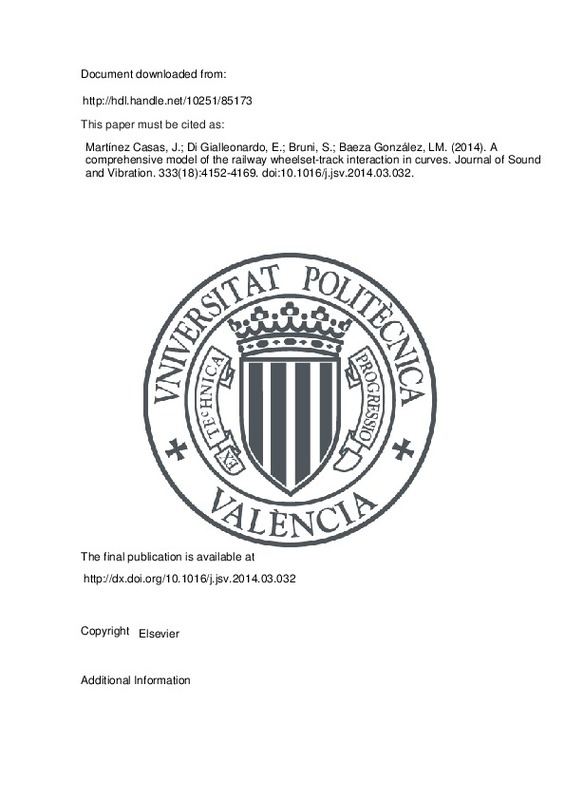JavaScript is disabled for your browser. Some features of this site may not work without it.
Buscar en RiuNet
Listar
Mi cuenta
Estadísticas
Ayuda RiuNet
Admin. UPV
A comprehensive model of the railway wheelset-track interaction in curves
Mostrar el registro completo del ítem
Martínez Casas, J.; Di Gialleonardo, E.; Bruni, S.; Baeza González, LM. (2014). A comprehensive model of the railway wheelset-track interaction in curves. Journal of Sound and Vibration. 333(18):4152-4169. https://doi.org/10.1016/j.jsv.2014.03.032
Por favor, use este identificador para citar o enlazar este ítem: http://hdl.handle.net/10251/85173
Ficheros en el ítem
Metadatos del ítem
| Título: | A comprehensive model of the railway wheelset-track interaction in curves | |
| Autor: | Di Gialleonardo, Egidio Bruni, Stefano | |
| Entidad UPV: |
|
|
| Fecha difusión: |
|
|
| Resumen: |
Train-track interaction has been extensively studied in the last 40 years at least, leading to modelling approaches that can deal satisfactorily with many dynamic problems arising at the wheel/rail interface. However, the ...[+]
|
|
| Palabras clave: |
|
|
| Derechos de uso: | Reserva de todos los derechos | |
| Fuente: |
|
|
| DOI: |
|
|
| Editorial: |
|
|
| Versión del editor: | http://dx.doi.org/10.1016/j.jsv.2014.03.032 | |
| Código del Proyecto: |
|
|
| Agradecimientos: |
|
|
| Tipo: |
|







![[Cerrado]](/themes/UPV/images/candado.png)


